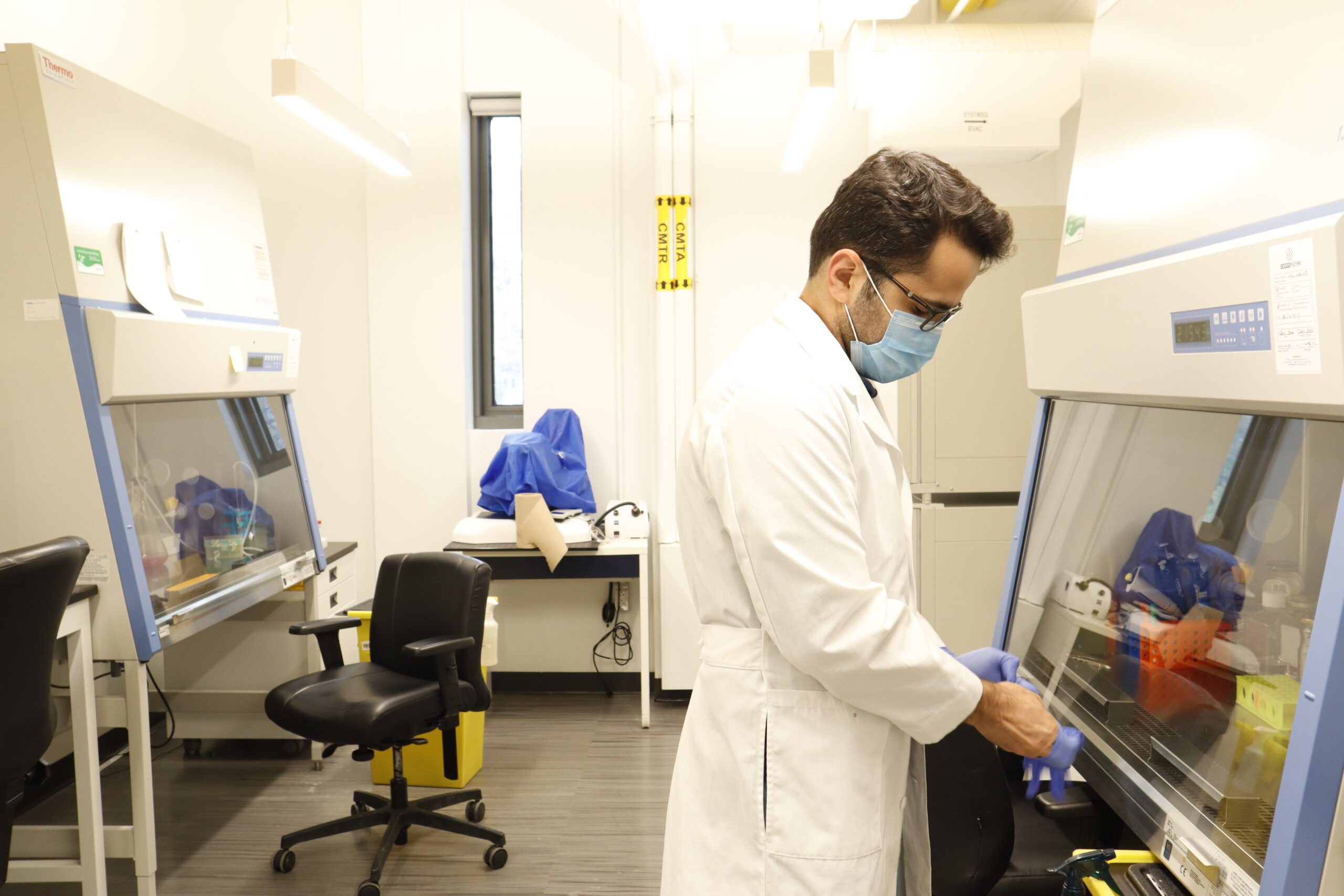After years of research and development, Hamid Ebrahimi Orimi and his team have made great strides in researching and developing new bioprinting technologies
How has illness impacted you and your loved ones? Every year, millions of people are affected by health issues relating to their organs. While the industry surrounding organ donation saves thousands of lives, it simply isn’t enough. Although the field of bioprinting is nowhere near the stage of the reprinting and transplantation of organs, progress is being made incrementally in the eventual recreation of human tissue here at Concordia by PhD candidate Hamid Ebrahimi Orimi and his team.
Among those in the field of bioprinting, Orimi stands out. As he earns his PhD in mechanical engineering at Concordia, he is also part of a team of bioprinting experts in Montreal. The team is composed of researchers and supervisors from Concordia’s Gina Cody School of Engineering and Computer Science, as well as from the Université de Montréal. The team has been working on a new and innovative approach that could have massive impacts in the field.
So what is bioprinting? Bioprinting technology utilizes biomaterials to replicate natural tissues, like those found in human organs. The process involves a special method of layering to simulate biological tissues. These materials are referred to as bio-inks. Based on Orimi and his team’s technological advances, their newly developed equipment can synthesize droplets of these bio-inks at much quicker rate than other kinds of bioprinters.
What makes the developments of this team so unique is that they have been able to “validate the feasibility of bioprinting primary adult sensory neurons using a newly developed laser-assisted cell bioprinting technology, known as Laser-Induced Side Transfer (LIST).” Through the team’s research, a type of bioprinting technology has been created through the use of lasers. Their paper on the subject was published in the scientific journal Micromachines. The development of this laser has been a game-changer.
As Orimi himself put it, “I’ve been working on this for the past five years — my PhD work has led me to all these discoveries. I’ve spent years on the development of this auto-mechanical device, which will be able to develop cells needed for bioprinting.”
Since the start of this project, the team has come a long way. “One of our main challenges was about developing the capillary cells properly through the LIST. However, we’ve seen progress in other areas. My colleague, for example, has used the laser technology to work on the cells of the cornea, where there are no blood vessels”, said Orimi.
Because capillaries are the smallest of blood vessels, recreating their cells through the LIST is quite challenging at the moment. The development of tissues that don’t contain capillaries has been sped up because of this.
Since the publication of their paper in Micromachines earlier this summer, further developments have been made. While the paper from July mentioned that the viability of the neuron cells was around 87 per cent on average, “we are now looking at a viability rate of around 93 to 95 per cent,” Orini stated.
For those less familiar with the terminology, there is a distinction to be made between the viability of cells and their functionality. As Orimi put it, “the viability refers to whether or not the cells can survive in the proper substrate (proper substrate: a surface where an organism grows). Functionality is about if they communicate with other cells and mimic behaviours found in human tissue.” While functionality seems to be the bigger concern at the moment, the viability of the bioprinted cells is only improving as research continues.
According to Orimi, the development of their LIST will only accelerate bioprinting technology. What the team hopes to do is to use their laser to assist in the manufacturing of medication.
“Currently, labs primarily use mice and other animals when doing their research. By the advancements of bioprinting, they would be able to test on manufactured human tissue, which would be better for the accuracy of the drugs.”
The prospects of bioprinting, thanks to the work of dedicated researchers across the world, are looking bright. While there is still a long way to go, Orimi and his team are positive that their laser technology will be of great use as they continue their research.
Photograph by Oona Barrett




